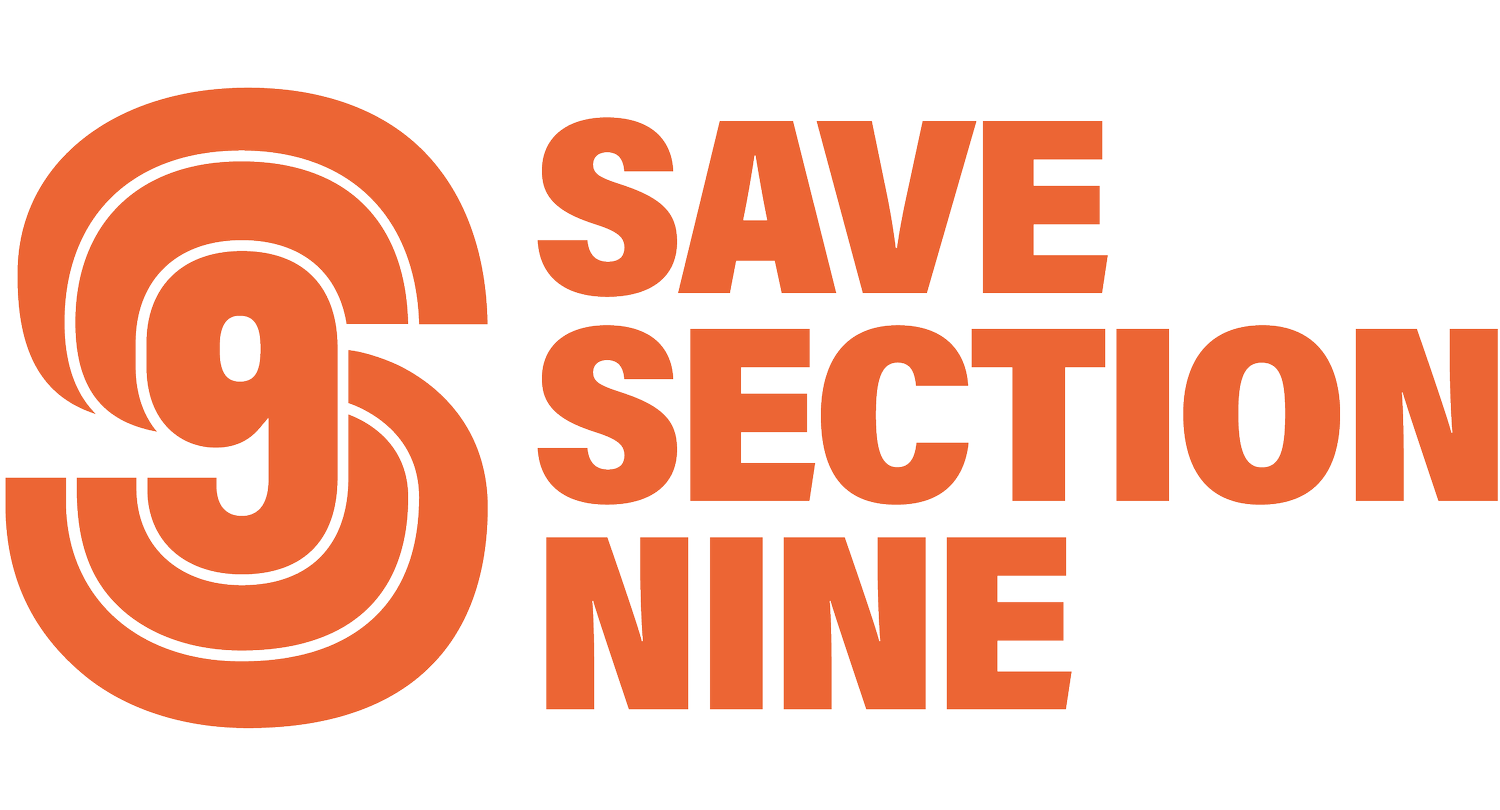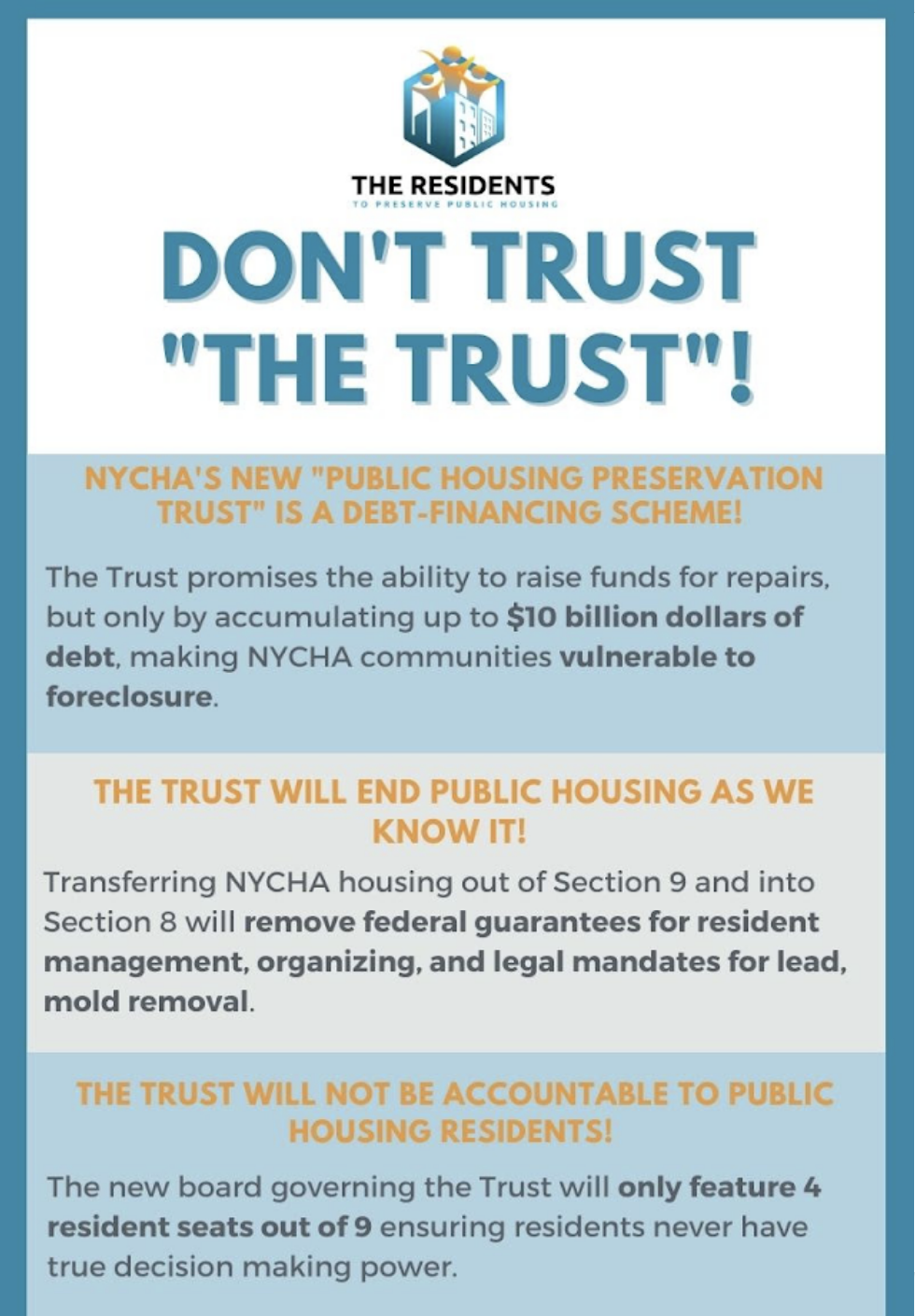Nationwide, public officials have been pushing new plans for public housing including Rental Assistance Demonstration (RAD) and the Blueprint/Trust. While we are told these plans will save our homes and preserve public housing for future generations, evidence from a growing number of tenants, legal advocates and researchers suggests these plans would end public housing and create new risks for tenants.
RAD is a risk
Research by Human Rights Watch investigated the state of public housing more generally as well, and concluded that the steady disinvestment in the program by the federal government had resulted in living conditions that violated the human rights of residents.
In response, HRW’s recommendations included
Fund Section 9 and NYCHA immediately,
Limit and evaluate the RAD program, and
Ratify a specific international treaty and pass legislation so it could be enforced. If the US were to ratify this treaty, and pass legsilation so it could be enforced, public housing residents would be able to hold the US government accountable for human rights violations in an international court.
The Human Rights Watch is just the tip of the iceberg. Additional research has been conducted by the National Housing Law Project, other legal advocates, as well as by the tenant-led group, NYCHA Neighbor Helping Neighbors in Far Rockaways (NHNN) who interviewed their neighbors at Ocean Bay Houses in Far Rockaway.
Along with a report, NHNN created an online resource so other residents could easily access existing evidence about RAD and RAD/PACT, as well as read their report and virtually attend their community meetings and town halls on the topic.
Learn more by visiting RADpact.info!
The “Trust” is Untrustworthy.
In 2020, then Chairperson Greg Russ proposed the Blueprint and the Public Preservation Trust. At that time, Save Section 9 created the following video to help raise awareness. It reviews the history of public housing, emphasizes Greg Russ’s track record on privatization and potential for personal gain, and outlines concerns raised early on, which remain true even as the plans move forward.
Additionally, we created a toolkit that was shared citywide to prepare tenants for a state-level hearing held in December 2020. These materials are still relevant though they have not been updated to reflect changes (i.e. the legislation has since been passed.
For a shorter version, please see the useful graphic created by the Residents to Preserve Public Housing, to the right.



